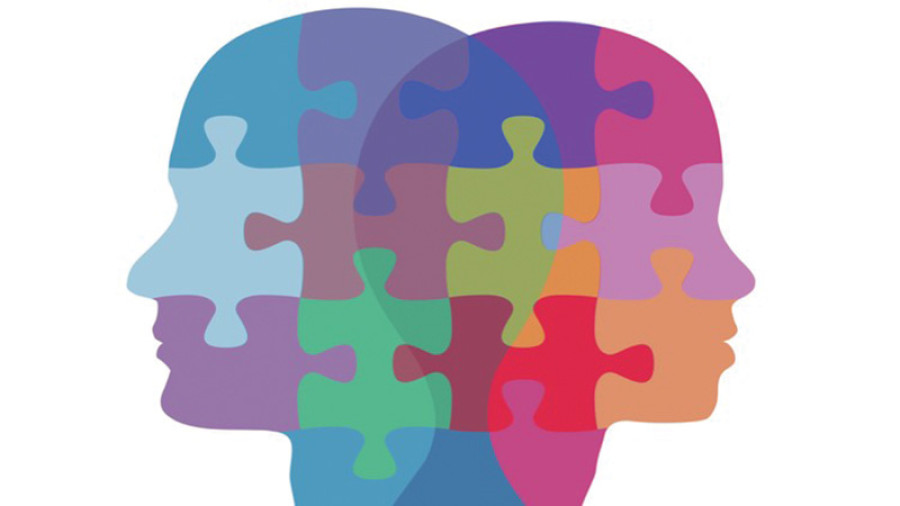Opinion
Out of the shadows
It is time the government paid attention to mental health because it has been too long ignored
Prawash Gautam
It is a well-known fact that a dearth of resources is one major factor behind the dismal state of mental health among the Nepali population. Only 0.22 psychiatrists and 0.06 psychologists are available for every 100,000 people.
Awareness campaigns to educate people about mental health issues bear the brunt of this lack of resources. Meanwhile, studies say that individuals who are more informed about mental illnesses are less stigmatising. This makes initiatives to spread mental health literacy an effective strategy that the government and other stakeholders can pursue to break the stigma attached to mental health issues.
Education campaigns might not necessarily require big budgets. Indeed, Nepal has set successful examples of employing low-cost but effective educational campaigns/strategies to address various social and health related issues. The government as well as organisations working in the field of mental health can use similar strategies to advance mental health literacy programmes at the grassroots level. Four of these approaches stand out and can be successfully employed.
Mental health in classrooms
Because schools are where children spend most of their waking hours, and most activities children engage in are related to or are guided by schools, the lead role that schools play in moulding the thoughts and worldviews of children is undisputed. The finding by the World Health Organisation (WHO) that about 50 percent of the mental illnesses begin before the age of 14 further reinforces the fact that schools are the best place to fuel awareness on mental health issues and tackle associated stigma.
One way schools can impart mental health literacy is through the inclusion of mental health in the curriculum. If included creatively in the curriculum, mental health education can evoke sensitivity towards and understanding of mental health problems, it can also instil the importance of mental wellbeing among individuals right from a young age and raise a population that is more accepting of mental health issues. To have a stronger impact, the curriculum could promote discussions about mental wellbeing outside of classrooms as well, for instance in school assemblies and parent-teacher meetings. In other words, making discussions on mental wellbeing a norm in schools could make the curriculum a powerful medium through which to raise mental health awareness in individuals when their minds are most receptive.
The second way schools can become a promoter of mental health education is by making mental health a component of training for teachers. The psychological and emotional needs of students could be added as curriculum components for those training to become teachers. Teachers trained thus will not only be more attentive to the emotional and mental health of their students while teaching, but will have important roles in imparting information on mental health to students during the many interactions they are bound to have.
Media engagement
The second low-cost and effective initiative that can be used to educate people on mental health can be educational programmes through media. The interactive media platforms that reach a huge population in a highly cost-effective manner are yet to be utilised for the benefit of mental health awareness in Nepal. Media use has surged in Nepal—35 percent households have television, and a whopping 58.8 percent Nepalis use the internet. Around 6 million Nepalis are on Facebook and use of YouTube is equally popular. Internet penetration in Nepal has reached all the nooks and crannies of the country, despite the difficult geographical terrain.
In the past, the government has launched successful awareness programmes on radios and televisions, spreading information about TB, HIV/AIDS and gender violence. Similar campaigns can be emulated for mental health issues on various media platforms.
Engaging grassroots groups
An equally effective strategy to fuel mental health literacy could be to use the existing structures of health posts, hospitals and community groups. Especially in rural communities across the country, aama Samuha (mothers’ groups) have emerged in the past decade as a good example of community solidarity for the transformation of problems at the grassroots level. These groups have become an integral part of campaigns that focus on eliminating social ills like domestic violence and drinking. The government and organisations can encourage and equip such community-based nationwide networks to spread mental health literacy.
Likewise, health institutions could be another means of educating people on mental health, whereby all service seekers could be provided with pertinent information related to mental wellbeing.
Platform of peer groups
The fourth strategy that could be effective in promoting mental health literacy entails the use of peer support groups for patients with mental health issues. Such support groups provide platforms for patients where they can listen to each other’s stories, share information and be sources of consolation and camaraderie. These group sessions also serve as ways of sharing information about mental health issues and ways to promote mental wellbeing in general. As families and friends of the patients also often become a part of these sessions, the sessions can be an effective way of raising awareness about mental health.
Such peer support groups can be formed at the local level as the initiatives of the government and organisations. Community groups like the aama samuha can play an instrumental role in creating and operating such groups.
By turning to low-cost and effective initiatives like these, the government and concerned stakeholders can overcome the obstructions posed by scarce resources and manpower to make genuine contributions towards creating a population that is aware about mental health issues. The availability of these options to promote mental health literacy makes it more a matter of government will rather than the (lack of) availability of resources when it comes to taking steps to make citizens informed on mental health and breaking the stigma attached to illnesses concerning the mind. It is certainly high time the government gave attention to one aspect of its population’s health that has been long ignored.
Gautam writes on contemporary social and cultural issues




 18.12°C Kathmandu
18.12°C Kathmandu










